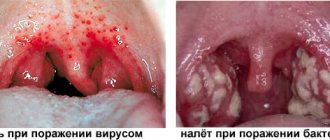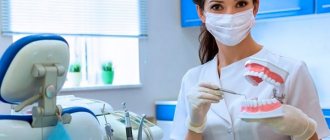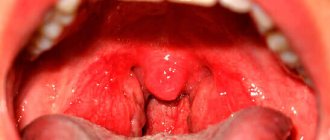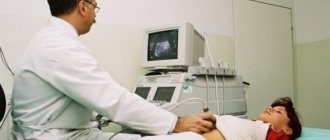Description of the sore on the lip
A lump on the lip, called a hemangioma, is not found in a single instance. This formation consists of several red dots, which subsequently increase in size and become darker in color. Often such sores merge into one big one. Subsequently, it is connected to the lip by a thick base or a thin stalk.
It should also be said that such dots on the lips (red) often spread to the soft tissues of the tongue, as well as to the inner sides of the cheeks. In rare cases, compacted formations may be observed in the cavity of the hemangioma, which in modern medicine is called a specific stone.
What is lip cancer?
Lip cancer is a malignant neoplasm that occurs as a result of the autonomous and uncontrolled growth of malignant cells in the tissues of the lips. Lip cancer is a consequence of head and neck cancer and can occur along with oral cancer or possibly be one of the symptoms of oral cancer. Lip cancer can take the form of squamous cell carcinoma, an abnormal growth of flat cells on the lips.
Treatment for lip cancer in hospitals in Israel and other countries usually involves surgery to remove the tumor. For small lip tumors, surgery may be minor with minimal impact on appearance.
Causes of a red bump
Why do spots (red) appear on the lips? There are a huge number of reasons for the development of such diseases. However, experts say that most often hemangioma is formed due to:
- injuries of various origins;
- abnormal intrauterine development of the fetus;
- infectious diseases that a woman suffered during pregnancy (for example, in the first half of the second month of pregnancy, during the formation of the cardiovascular system of the unborn baby);
- the presence of vascular tumors of unknown origin;
- infection of the lip mucosa by pathogenic microorganisms.
Allergy as a cause
If the red border, surface of the lips or red tongue appears due to an allergic reaction, there is usually no obvious discomfort in adults or children. Certain foods, toothpaste, and medications can trigger the development of allergic reactions. After the influence of the allergen ends, the spots usually go away on their own. But for this it is important to identify the irritant and eliminate it from life.
The main symptoms of an allergy: symmetrical arrangement of spots, the appearance of flaky or rough areas. Spots can be not only on the lips, but also in the mouth; they also peel off on the mucous membrane.
Types of sores
An ulcer on the lip, or so-called hemangioma, has several types depending on the location. Let's look at their features right now:
- Cavernous (or cavernous) hemangioma. It is characterized by damage to the subcutaneous tissue, as well as adjacent (soft) tissues. This formation often grows, resulting in the formation of a vascular cavity inside the affected tissue. The consistency of such a sore is spongy, and it is quite soft to the touch.
- Capillary (or simple) hemangioma. This type of benign tumor occurs in 95% of cases. It is a tangle of capillaries intertwined or fused with each other. This hemangioma is characterized by penetrating or infiltrating cylindrical growth, as well as a superficial location. It should be especially noted that the lesion in question affects only epidermal tissue.
- Mixed soreness. This type of hemangioma is very rare. Its peculiarity is not only that it consists of vessels, but also that it contains completely different types of tissues.
- Pyogenic bump on the lip. Most often, such a sore occurs due to injury. This is a single formation that is small in size. In this case, purulent-bloody exudate often leaks from the affected tissues. The most favorite places for such a sore are the inner and outer sides of the lips, as well as the tongue and the area of the inner sides of the cheeks.
- Angioleiomyoma. Such an ulcer on the lip does not form in the epidermis, but in the muscle tissue. As it grows, the patient notices the interweaving of the tumor with the vessels and muscles of the lips.
Possible complications
The appearance of a hemangioma in a child can provoke a number of serious and hazardous health consequences. This condition often leads to disruption of basic functions - sucking and eating solid food. The functioning of the body and its processes is disrupted, affecting the development of the young patient.
A rapidly developing tumor can grow into the nasal sinuses, complicating breathing. This is a rather dangerous condition that provokes oxygen starvation.
Bleeding after damage to the hemangioma is profuse. It is almost impossible to eliminate them yourself without specialized medical care. A child can accidentally or intentionally rip off an education. Parents of children with this diagnosis need to be especially careful.
There is a possibility of ulceration of neoplasms if they are damaged. An open wound forms on the lip, through which pathogenic bacteria easily penetrate. The condition is dangerous with the risk of tissue necrosis and the development of sepsis.
According to statistics and reviews from parents, congenital hemangiomas can resolve on their own. By the age of 3, the formation disappears in 50% of children, by seven – in 70% with a similar diagnosis. Removal is not always necessary. To predict the disease, a thorough diagnosis is necessary, which determines subsequent actions.
Symptoms of the disease
Hemangioma on the lips cannot go unnoticed. Such formations, especially those that occur on the inside of the lips, very often interfere with eating, talking, and performing hygienic procedures for caring for the oral cavity and teeth.
Situations when an existing sore is injured are extremely dangerous. In this situation, the patient may experience heavy bleeding, which can be very difficult to stop.
Visually examined spots on the lips are recognized by the following characteristics:
- the color of the resulting sore can be violet-bluish, dark red or brown;
- when pressing with a finger on the formation, it first turns pale and then acquires its previous color;
- affected tissues may protrude above the skin level;
- The surface of the hemangioma is usually dry and rough.
Infection as a cause
The most common cause of redness under the lip, above the lip or in the oral cavity is an infectious process. But spots are not the only symptom. They are usually accompanied by hyperthermia, general weakness, red throat, and pain during swallowing. Such infectious diseases include: herpes, chickenpox, scarlet fever, syphilis, typhus, staphylococcus, erythema, roseola, measles, rubella, mononucleosis, meningitis.
If such diseases appear in a child, they are usually tolerated more easily than in an adult. Chickenpox, scarlet fever or rubella require quarantine. After recovery, immunity usually lasts for life. In addition to the surface of the lips and oral cavity, a red tongue is noted in such diseases. Redness on the lips and in the oral cavity may also appear due to the following diseases: herpes, herpetic sore throat, stomatitis.
Stomatitis is accompanied by malaise, headaches, weakness, hyperthermia, swelling and redness of the mucous membrane. There are spots on the palate, inner surface of the cheeks, and tongue.
Herpangina occurs more often in children. It is accompanied by the following symptoms:
- febrile hyperthermia, which lasts several days;
- the appearance of cramps in the stomach;
- redness and peeling of the palate, tongue, back of the throat;
- the appearance in the oral cavity of papules with cloudy contents inside;
- pain when swallowing, drooling;
- After opening, ulcers appear in place of the papules and the skin peels off.
After 10 days, recovery usually occurs.
Diagnostic methods
If you suspect that the sore that appears on your lip is a hemangioma, you should immediately consult a specialist. For this disease, doctors prescribe an ultrasound. This modern research method helps to determine not only the clear boundaries of the formation, but also the depth of its germination.
If, after an ultrasound examination, the doctor still has doubts about the diagnosis, then the person is prescribed x-rays of the vascular beds in the area of the affected tissue.
If degeneration from a benign hemangioma to a malignant one is suspected, the patient’s body is examined comprehensively. In this case, the patient undergoes a series of appropriate tests to determine the extent of the spread of the tumor process.
Lip diseases. Photos and their names. Treatment methods
In the modern world, diseases on the lips are quite common. They can occur against the background of external and internal provoking factors.
When the first symptoms of a disease appear, the patient should seek help from a doctor who can correctly diagnose and prescribe rational treatment.
Causes of pathologies
- Diseases of the lips in humans in most cases are observed with a weakened human immune system, which cannot cope with viruses and bacteria that attack the body.
- If the diet lacks vitamins, this can lead to a pathological process.
- Human lips are full of nerve endings. With nervous overstrain, they become overfilled with blood, which creates an unaesthetic appearance.
- Lip diseases are observed with frequent hypothermia or overheating.
- If the patient has allergic reactions to cosmetics or food, then damage may occur against this background.
- Improper installation of braces or veneers creates skin irritation, which leads to a pathological condition.
- Lip diseases can also be caused by bacteria and fungi.
To ensure adequate treatment of diseases on the lips, it is necessary to establish their cause.
Development of cheilitis
Cheilitis is a benign inflammatory disease that develops on the lips. The pathological condition has pronounced signs, which makes it possible to detect it in a timely manner.
Features of exfoliative cheilitis
A decrease in the defenses of the immune system, a stressful situation, as well as the presence of a hereditary predisposition and mental disorders can cause lip disease.
If the form of the disease is dry, then white crusts appear on the edges of the lips, which are easily removed by hand. Lips often become red and flaky.
The exudative form of the disease is accompanied by redness, burning and swelling of the lips. Most patients complain of pain. The crusts in this form of the disease are gray-yellow in color.
Treatment of the disease should be carried out with the use of sedatives. It is recommended to use interference agents to lubricate the lips. To remove crusts - boric acid. Most patients are prescribed drugs to increase the body's reactivity, for example, Pyrogenal.
Features of actinic cheilitis
This form of the disease is observed with excessive sensitivity to ultraviolet radiation. If a person spends a long time in the sun, this leads to an exacerbation of the disease. Symptoms are pronounced:
- When this pathological condition occurs, the patient feels dry lips. Their surface turns red.
- Scales and cracks appear on the lips.
- If treatment of the disease is not carried out in a timely manner, this leads to the appearance of erosions that do not heal for a long time.
- Some patients were diagnosed with the appearance of ulcers and hardened areas.
- If the disease is chronic, it can lead to a precancerous condition.
To eliminate cheilitis, it is imperative to use photoprotective creams when going outside. Patients are also prescribed corticosteroid ointments. Prednisolone ointment and Flucinar are quite effective in this case.
To slow down the pathological process, it is necessary to take vitamins and nicotinic acid. If necessary, it is recommended to use antimalarial drugs, for example, Delagil.
The course of atopic cheilitis
Atopic cheilitis is a symptom of diseases such as neurodermatitis and atopic dermatitis. It occurs when the human body is exposed to a variety of allergens - plant pollen, household dust, medications, food products, bacteria and microorganisms.
With atopic cheilitis, the border of the lips acquires a bright red tint, dryness and flaking of the skin is observed. Most patients are diagnosed with cracks. Some patients complain of a burning and itching sensation, which may be accompanied by pain.
To eliminate the disease, it is mandatory to prescribe anti-allergy medications. Usually:
- Claritina
- Suprastina
- Fencalora.
To strengthen the immune system, it is recommended to take vitamins that belong to group B. If the disease lasts for a long period, then it is necessary to take corticosteroid ointments. It is recommended to apply them to rashes 4 to 6 times a day.
In some cases, patients are prescribed borderline Bucca rays, which are characterized by a high level of effectiveness.
During the period of therapy, all possible allergens must be removed from food. Carbohydrates should be taken by patients in limited quantities.
The course of Fordyce's disease
When Fordyce's disease appears, the sebaceous glands on the lips become enlarged. In appearance they look like pustules. The occurrence of a pathological process is quite often observed against the background of hyperplasia of the sebaceous glands.
To treat cysts, it is recommended to use retinol-containing ointments. To hide cosmetic defects, permanent makeup is used.
To remove old rashes, a laser should be used, sometimes cryodestruction or electrocoagulation is used. Unfortunately, not all treatments are highly effective, so relapses occur in 80% of the population.
Lip cancer
Cancer on the lips are neoplasms that are malignant in nature. In the early stages, the disease manifests itself in the form of ulcers that constantly bleed. In appearance they are similar to herpes. Lumps and increased salivation may also occur.
Attention ! If the ulcers do not go away when using medications, the patient should seek help from a doctor.
The treatment regimen directly depends on the degree of its development, as well as on the clinical picture. In most cases, treatment is carried out using cryotherapy, radiation or surgery. Patients are also recommended to undergo chemotherapy using special drugs.
Herpes
One of the most common diseases on the lips. There is a constant presence of the herpes virus in the human body. If the immune system's defenses are sharply reduced, the disease manifests itself as blisters on the lips.
If the pathology is not treated in a timely manner, there is a regular increase in their number, then the blisters burst and ulcers appear in their place. In some cases, patients experience increased body temperature and chills.
Treatment of the disease is carried out using antiviral therapy. For this purpose, patients are recommended to use a special ointment, for example, Acyclovir. Traditional medicine also helps - essential oils, chamomile infusion, sea buckthorn oil.
Development jammed
Almost every person has experienced seizures at least once in their life. They appear as cracks in the corners of the lips. If treatment is untimely, large erosions occur. Patients complain of discomfort, pain and bleeding. It often becomes difficult to open your mouth and eat food.
The appearance of this pathological process is often diagnosed against the background of vitamin B deficiency, damage by fungi, streptococci or staphylococci. If a person is fitted with the wrong denture, this can also lead to illness.
Zayed treatment is prescribed to the patient only after all examinations have been completed. In most cases, antibacterial therapy and antifungal drugs are used for this purpose.
To ensure the most effective treatment, the patient must adhere to a diet - include avocados, green vegetables, eggs, nuts and minimize flour products.
As you can see, lip diseases can be quite diverse, but they are all characterized by the presence of clearly expressed signs. When they appear, patients should begin treatment immediately.
Read: The best mascara. 2020. Which is the best?
Source: https://beautimy.ru/bolezni-gub-prichiny-vidy-zabolevanij-diagnostika-i-lechenie/
Treatment options
If a point appears on the lip, called a hemangioma, then the radical and most reliable way to eliminate it is surgical excision. This technique should be chosen only by the attending doctor, taking into account research data, the type of tumor, its size and degree of occurrence.
Laser removal of the sore in question on the lip is carried out only in cases where the formation is small in size and is capillary.
Cryotherapy is used if the tumor is a small or medium-sized lump and is also located in the area of the facial nerves. By the way, in such cases the surgical excision technique is prohibited. This is due to the fact that during the operation the nerve can be quite easily injured with a scalpel.
Cryodestruction is perhaps the most gentle procedure. When using it, it is impossible to damage the facial nerve.
If the formation is quite large in size, and a noticeable pulsation is felt in its tissues, this means that a blood vessel runs through it. It is simply unacceptable to remove such a lump right away. First, special treatment should be carried out to help “empty” the vascular tangle. Doctors often use hormonal or radiation therapy as such therapy. Only after this the tumor can be removed.
Prevention and precautions
Specific prevention of hemangiomas in children has not yet been established. During pregnancy, a woman should pay maximum attention to her own health - avoid contact with sick people, take vitamins prescribed by a doctor, eat right, and walk in the fresh air. In the presence of congenital neoplasms, to prevent complications, doctors recommend monitoring the growth of the tumor and monitoring emerging symptoms. The best way to prevent possible consequences is to remove the tumor.
It is unacceptable to carry out treatment at home, especially when it comes to infants.
Hemangioma of the lip is a common occurrence. The disease is diagnosed in 10% of newborns. In most cases, a benign tumor does not pose a clear threat to the baby and disappears on its own at an early age. But the possible risks of complications should be taken into account. In order to prevent the development of pathological processes, if a similar phenomenon is detected on the baby’s lip, it is necessary to inform the doctor about it.









